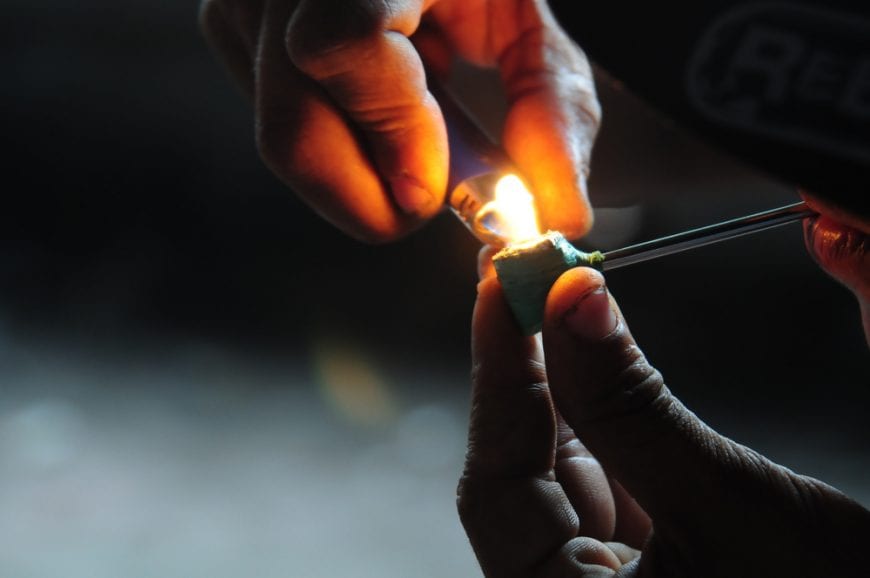There are no pharmaceutical solutions for treating crack addiction, but a recent study says cannabis can help.
Once more, research confirms anecdotal evidence that cannabis can help treat drug addiction. This is exciting news not only for those who work in the addiction field, but also for those who struggle, or who have a loved one who struggles, with crack addiction.
Crack Addiction Hits Marginalized Groups Hard
In a press release outlining the study, researchers explain how further funding will be needed to confirm the results of their work (published in 2017). They expressed hope that their findings would contribute to crack cocaine treatment. Presently, all pharmacotherapies have failed.
It is currently estimated that around 14 to 21 million individuals across the world use cocaine. Out of this group, roughly 7 million have a cocaine use disorder, and a significant population use crack cocaine.

North and South America’s marginalized groups see the highest rates of crack cocaine addiction. These groups often don’t have access to treatment facilities and funding of support systems that could help them overcome their addictions.
People will either inhale or inject crack cocaine. These methods of consumption introduce risks of injury. Cuts and burns are often left untreated due to fear of asking for help. As a result, needles create the further concern of transmission of diseases like HIV and hepatitis C.
Other side effects of crack use include decreased appetite, lack of sleep, increased heart rate, muscle spasms, multiple types of depression, paranoia, anxiety, hostility and anger, and intense cravings. Crack puts the user at higher risk of seizure, respiratory failure and problems, heart attack, and stroke as well as kidney, heart, and liver damage.
If you or anyone you know suffers from crack addiction, it’s important to seek help and speak to a doctor. Even if treatment and reduction isn’t your goal, regular health check ups may save your life. Regular hepatitis and HIV testing is crucial. These diseases and these problems make needle exchange programs across the country critical initiatives to diminish the spread of infectious diseases.
Study of Cannabis Treating Crack Addiction
Researchers at the British Columbia Centre on Substance Use (BCCSU) presented on May 16, 2017 in Montreal. Physician and BCCSU postdoctoral fellow, Dr Eugenia Socias, led the research team. While studies in Brazil and Jamaica have demonstrated similar uses of cannabis, this is currently the largest longitudinal study to examines the effects of intentional cannabis use for treating cravings and withdrawal symptoms of crack cocaine.
Researchers used 620 observations from 122 participants who reported using cannabis to reduce their reliance on crack. Participants came from mainly the Downtown Eastside and Downtown South neighbourhoods of Vancouver. The study looked at before, during, and after cannabis use data. Therefore, they gained a fuller view of the effects of cannabis on crack use.

As mentioned above, research has yet to uncover pharmacotherapies to reduce and treat crack cocaine addiction. Combined with research in Jamaica and Brazil, these studies offer hope that cannabis may become an approved form of treatment. In Brazil, researchers followed 25 crack cocaine users, finding that 68% of participants stopped using crack cocaine in the nine-month period. These are positive results in a country that is the largest national consumer of crack cocaine.
“Cannabis to Treat Problematic Substance Use”
Senior author of the paper and research scientist at BCCSU, Dr M-J Milloy, explains that they have traditionally seen an “absence of effective therapies for crack dependence.” The new our findings, however, “provide a foundation on which to explore the potential of cannabis to treat problematic substance use.” Dr Milloy says upcoming legalization allows the team “to further investigate whether cannabis could contribute to reducing the harms of crack cocaine use among marginalized drug users.”
The opportunities for research in this area are exciting. This study offers hope that a problem affecting so many people globally may have a solution in sight.





